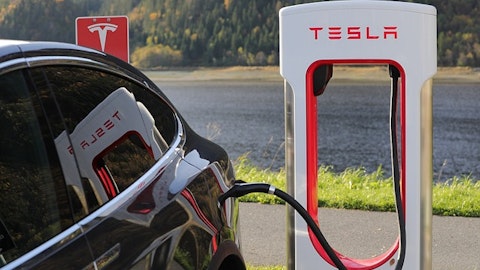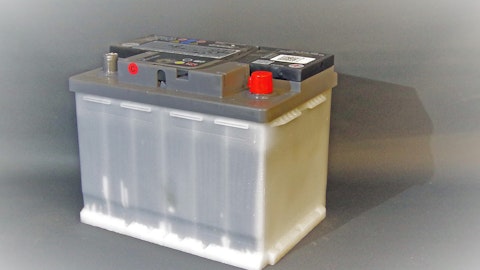But beyond that, we don’t believe that the hub is going to solve all of our infrastructure challenges. I will say that we have better insight and better visibility into the deployment time lines of some of our key infrastructure projects with a lot of our customers here in California or in other large states where tagging infrastructure is being deployed such as in Texas or New York. But we — it doesn’t mean we have certainty around all of those dates as projects can experience construction delays, utility delays, building permit delays that can slow these projects down. So we’re continuing to be more proactive about monitoring that and incorporating that into our annual planning exercise. And then products like the hub will continue to supplement and provide a stopgap solution until we can get that permanent infrastructure deployed.
Donovan Schafer: All right. Great, thanks guys. I’ll take the rest of my questions offline.
Operator: Thank you. The next question comes from Jerry Revich with Goldman Sachs. Please go ahead.
Unidentified Analyst: Hi, this is Adam [ph] on for Jerry today. Thanks for taking my questions. It seems like you are sort of at the run rate of deliveries consistent with the low end of the guide. So just wondering how you’re thinking about the puts and takes that would keep you at this run rate and at the low end versus the high end of the range? What are the key bottlenecks to deliveries and the range of that embedded in guidance?
Dakota Semler: Yes. Thanks for the question, Adam. So I would start off by reiterating my previous point really about infrastructure. That continues to be the single biggest bottleneck or hurdle in terms of increasing deliveries. So for the reaching or obtaining the high end of the guide, I think infrastructure will drive the majority of that incremental performance. There are other factors that are obviously playing into all of this, including the time to delivery from the upfit facility, supply chain and component parts that go into the vehicles. But I would say the majority of the delays that we experienced in that range are going to be attributable to infrastructure delays with projects that customers are deploying. One other factor that I think is — will significantly change that is the hub.
And although we’ve just launched the Hub Gen 2 units, they’re going to be shipping our first units this quarter, we don’t have a clear understanding of how that will impact deliveries quite yet as we haven’t fully rolled out production and fully got them into the field with customers. So we do anticipate that it will have a pretty significant positive impact for us being able to stay within that range and hopefully stay at the high end of that range. So as the hub continues to ramp up in production in Q2, we hope that, that can drive our performance and being in the top end of the range.
Unidentified Analyst: And nice to see the positive margin — gross margins on the new Xos Stepvans. I think you said unit gross margins in the range of 6% to 23% on that project — on that product. What drives that variability? And where do you expect margins on that product to trend over time?
Dakota Semler: Yes. So it actually is driven a lot by customer model mix and the configuration ultimately that our customers deploy. Some of our longer-range battery options may have a higher margin profile, other feature add-ons, things like liftgates or power take-off or power export might drive that and even the body configuration. So generally, customer-specific attributes and features on the vehicle as well as customer-specific deal terms as we go to increase volumes and increase deliveries to some of our larger customers, we do offer small discounts for some of those larger bulk purchases. And those generally will accrue to those customers that are buying north of 100 units or more so that’s what drives most of the variability. There is obviously COGS allocation or labor allocation that gets attributed to different vehicles, depending upon the — how that vehicle is built up, but those vary less than the actual final vehicle model spec.
Unidentified Analyst: Got it. That’s helpful. And then last one for me. The unit deliveries outlook for 2024, can you provide any color between the split of Stepvans versus powertrains versus hub products?
Dakota Semler: Yes, we’re not providing that guidance today. We anticipate that really all three of the categories are growing pretty substantially. And so as we look to 2024, there’s just depending upon our customer, whether it’s a powered by Xos customer or it’s a Stepvan customer, there are different variables that inform when they take delivery of those trucks, but we have a pretty good confidence around that pipeline to stay well within that range and know that really, all three of these product segments are going to be growing double digits in terms of their deliveries in the year.
Unidentified Analyst: Great. Thanks so much.
Dakota Semler: Thanks Adam.
Operator: The next question comes from Mike Shlisky with D.A. Davidson. Please go ahead.
Michael Shlisky: Hi, good afternoon. Thanks for taking my question. I guess I wanted to see — you still have legacy vehicles to deliver in 2024? Or will it be entirely the new version? And I guess, on top of that, you have a new, new version, is there a whole new round of improvements for further gross margin in somewhat near future here?



